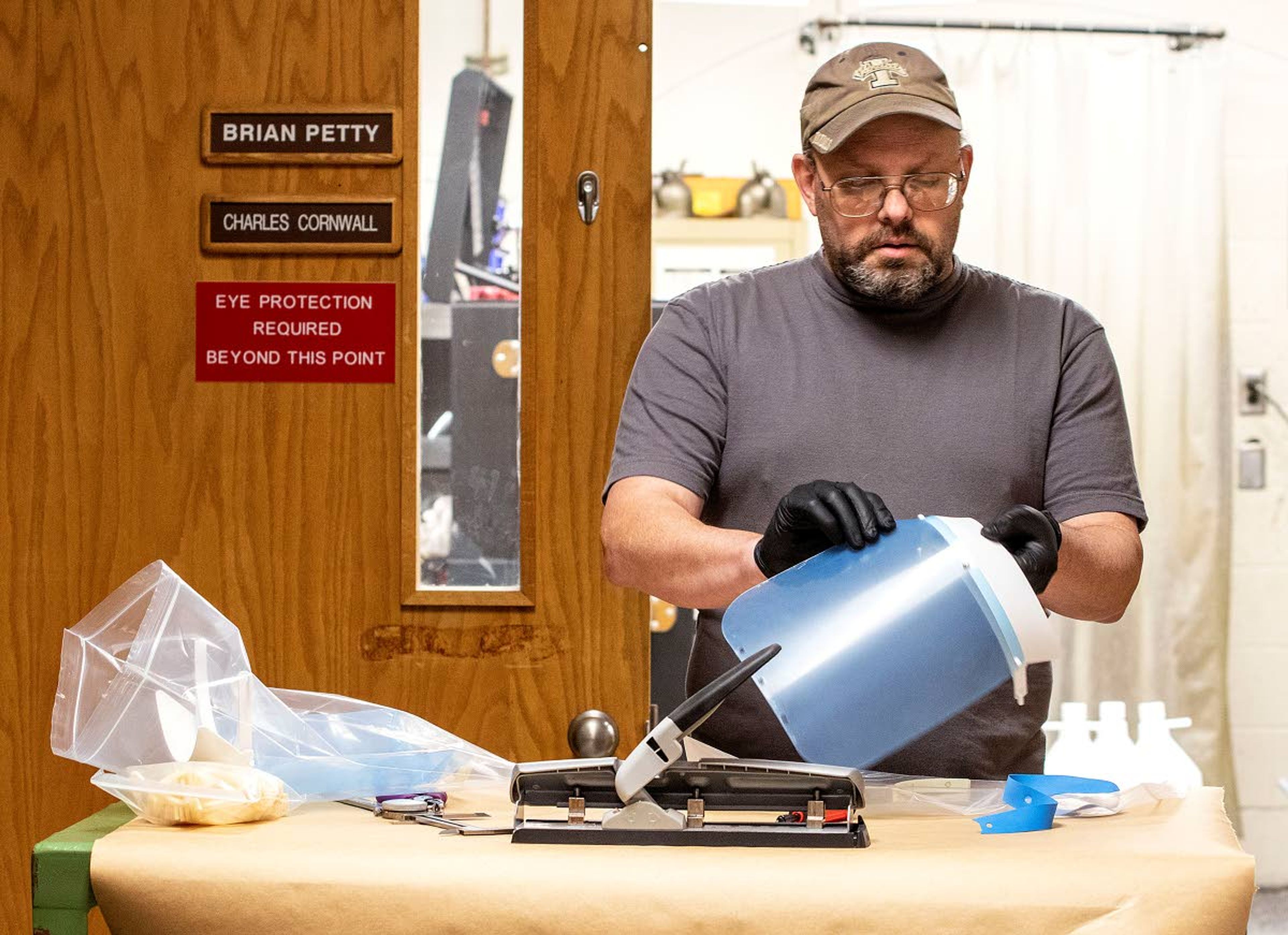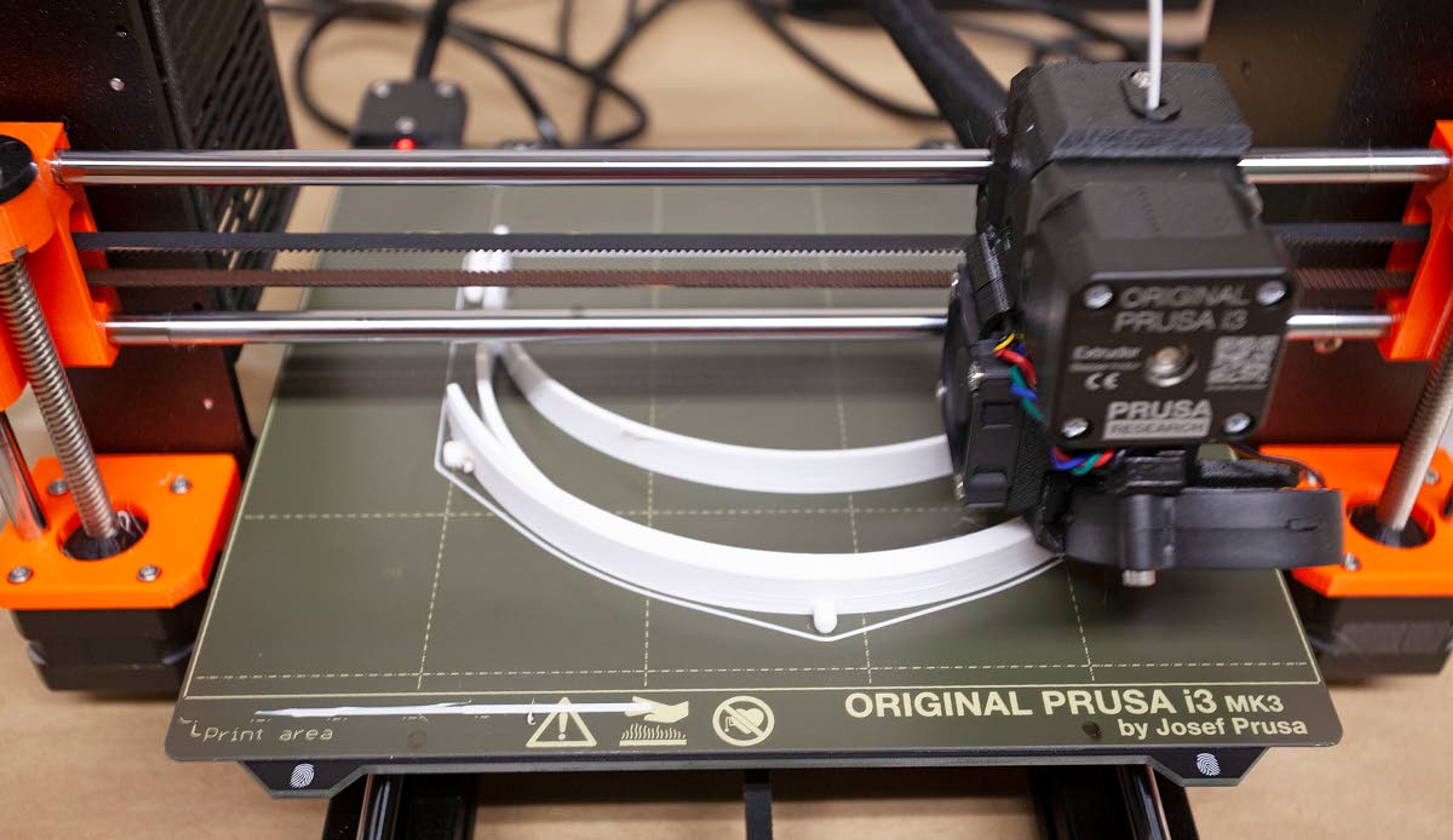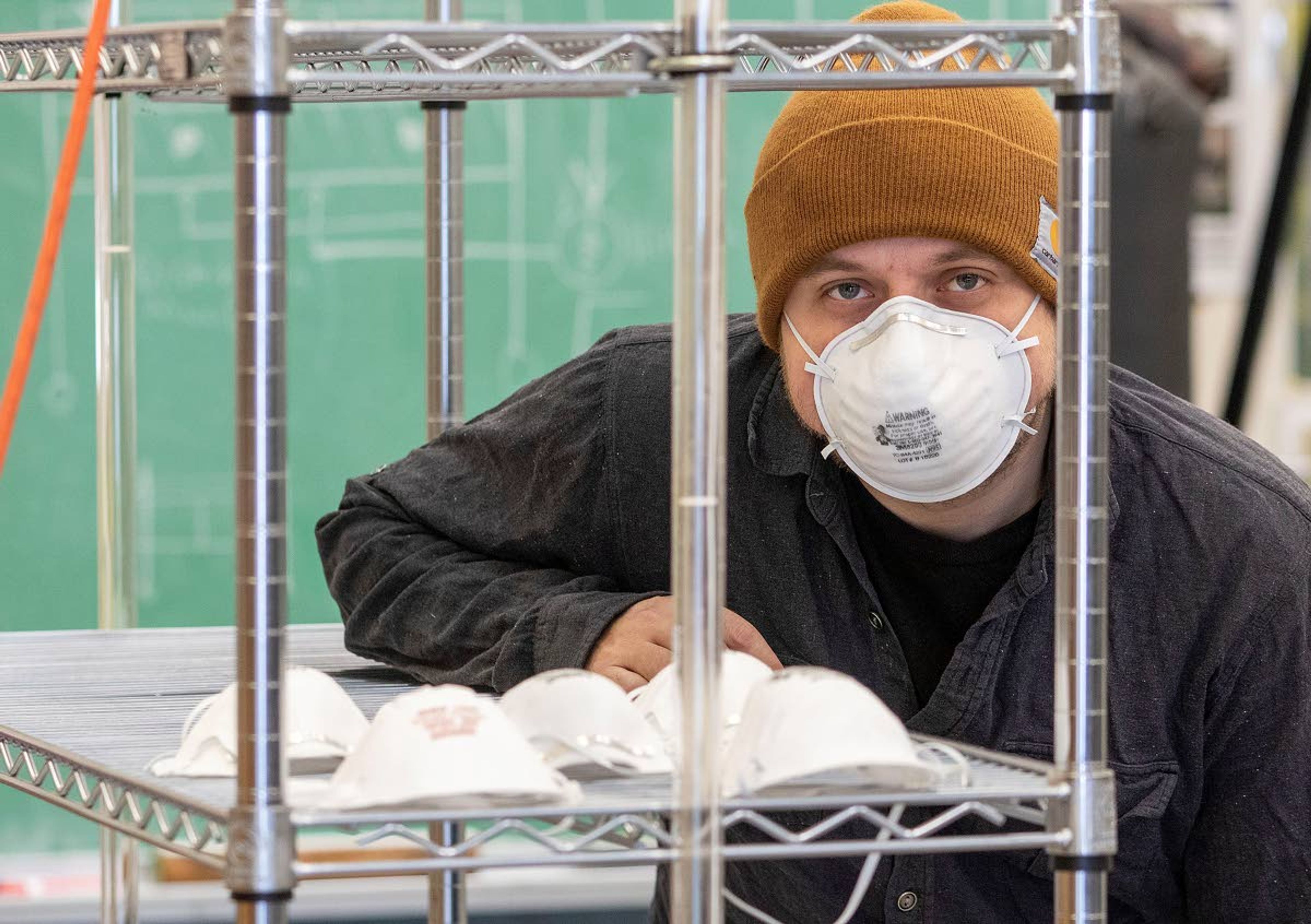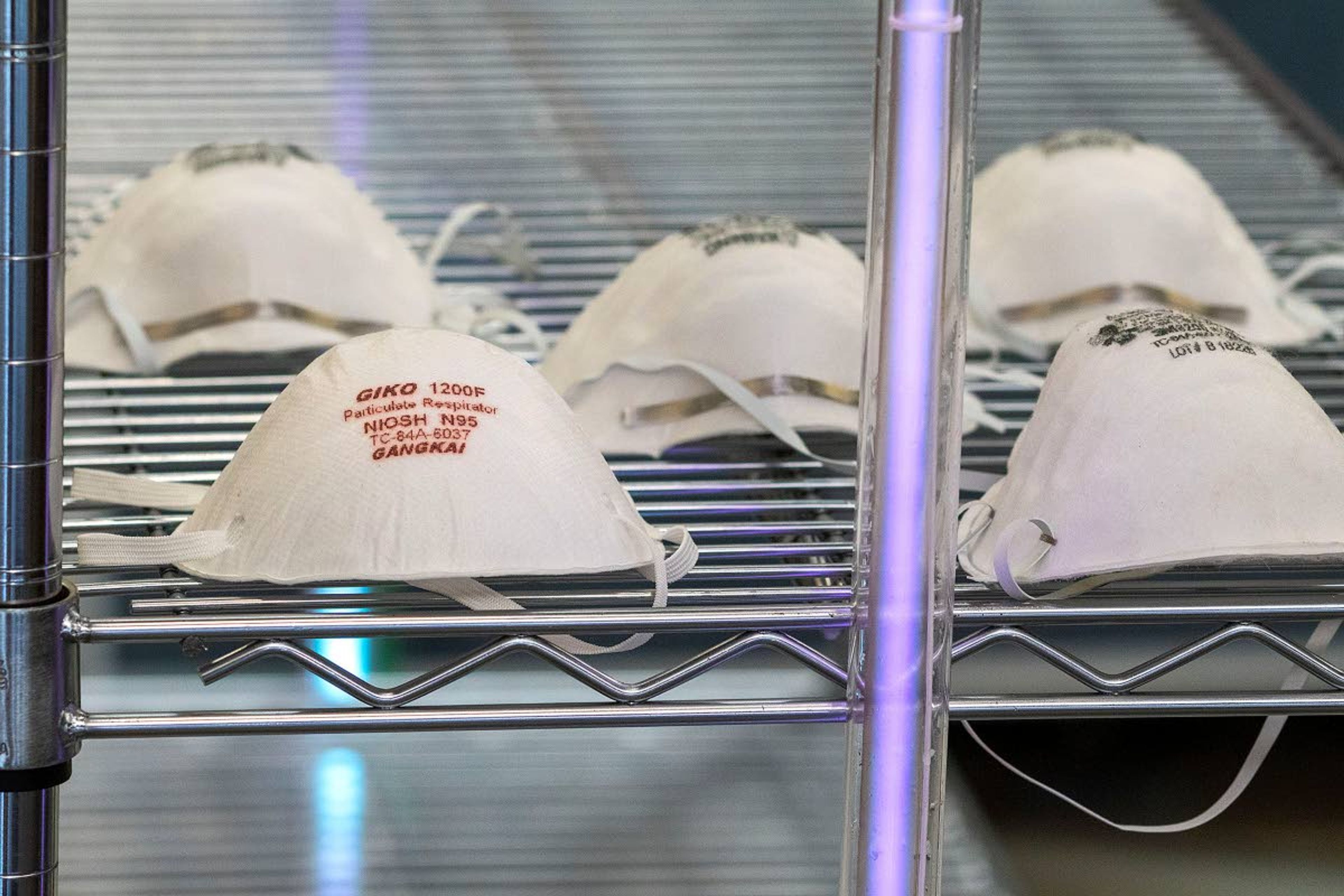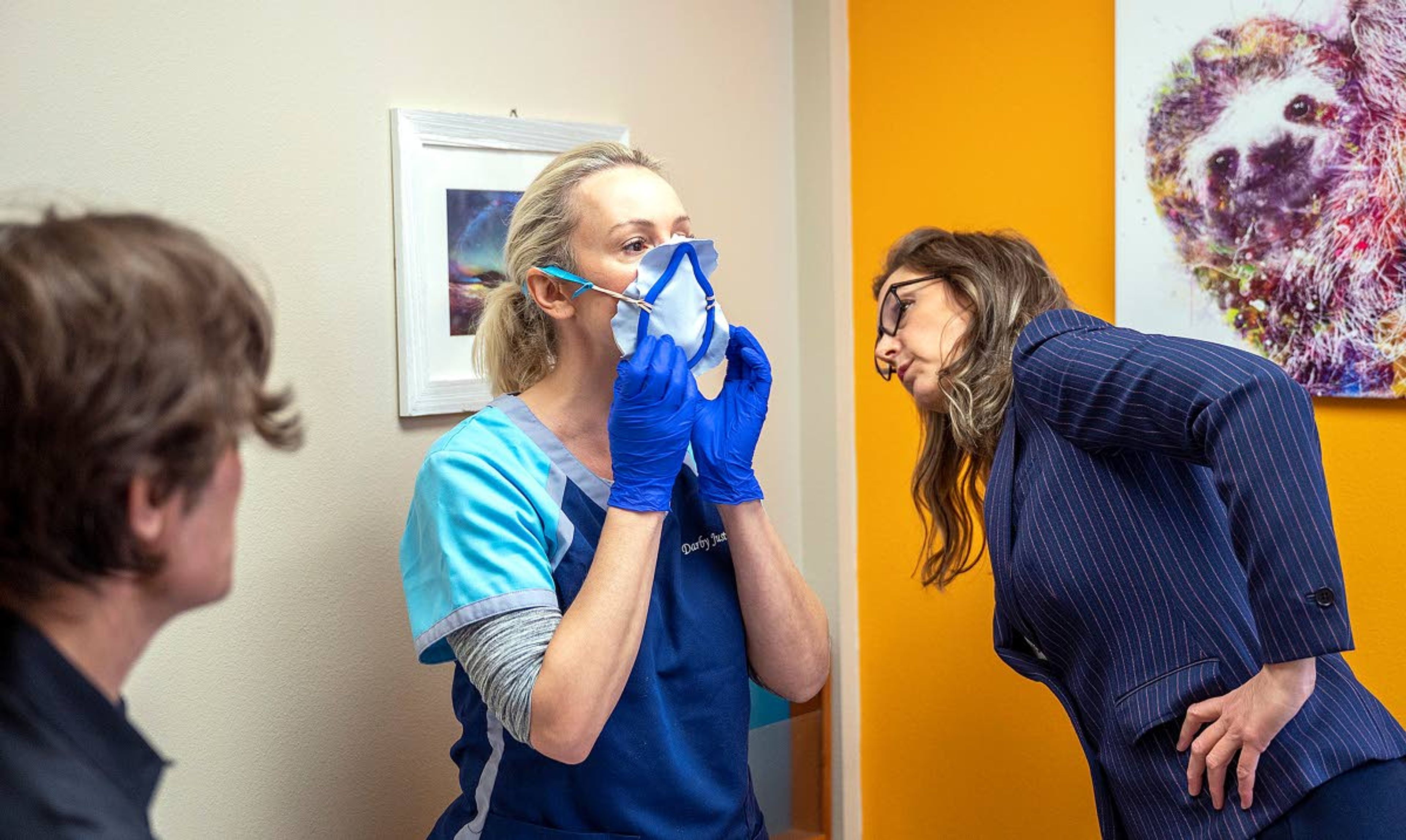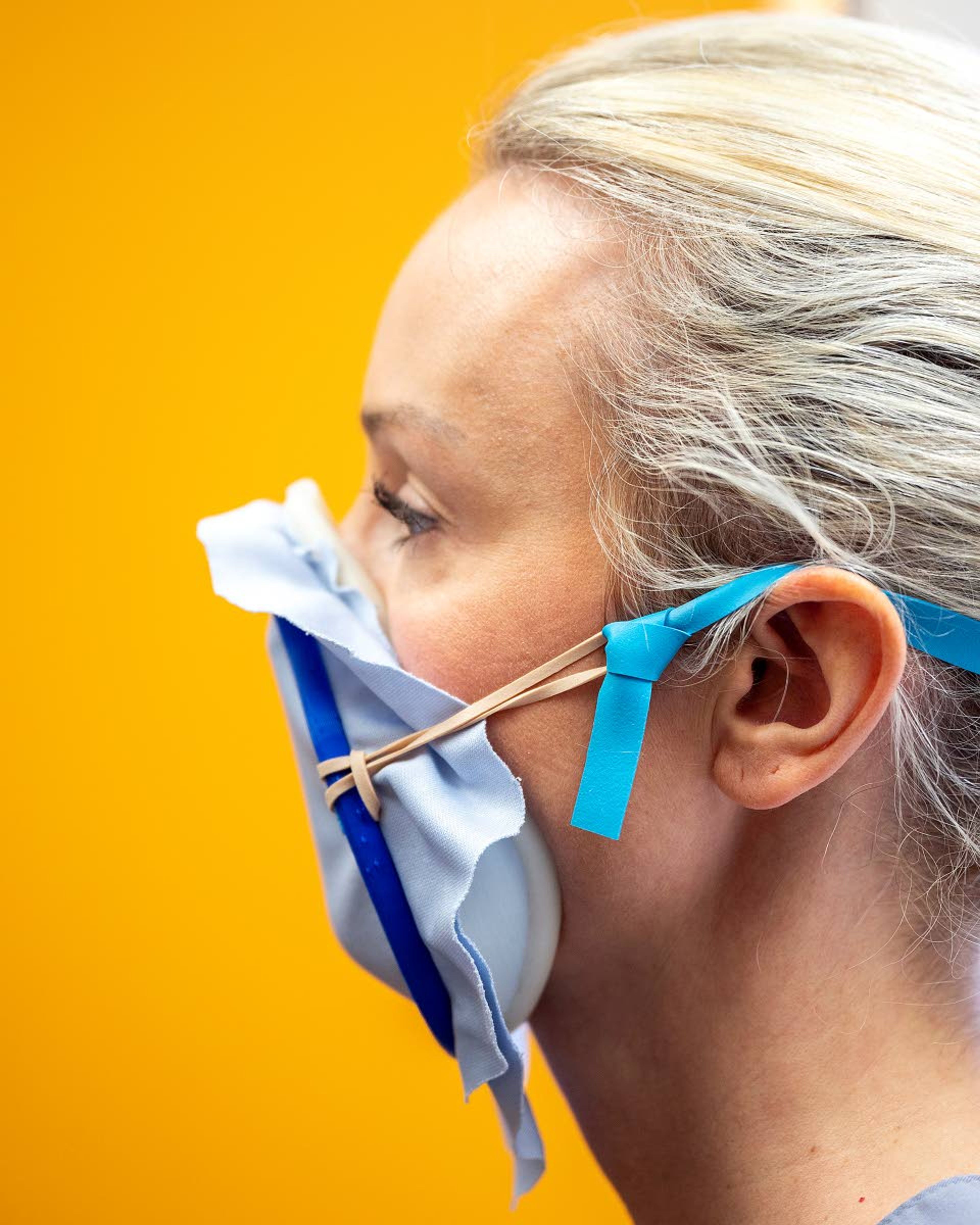UI developing gear for health care workers
University professors racing to develop face shields, masks for those fighting COVID-19
The University of Idaho has devoted resources in various departments to produce personal protective equipment for health care workers as shortages of such gear have become commonplace with the onset of the coronavirus pandemic.
Major projects include face shields to protect workers from splatter and spray of coughing patients as well as surgical masks, which have either been 3D printed or sewn from cloth.
UI mechanical engineering professor Gabriel Potirniche, who is coordinating these projects, said the face shield is essentially a barrier made from transparent plastic that covers the face from forehead to chin and is mounted with a strap that goes around the head. He said the shield itself can be laser-cut from sheets of plastic, but other pieces of the design must be 3D printed, which is more time-consuming.
“It takes about an hour and a half for each of the headband pieces to be printed,” Potirniche said. “However I would estimate that in the next week or so, if we have many printers working on these, we will be able to make many of them and deliver them to hospitals.”
Potirniche said multiple hospitals, including Gritman Medical Center, have expressed interest in the shields and in a plastic, 3D-printed mask design they have been perfecting as well.
He said these were originally based on a design they’ve dubbed the “Montana mask” created by a dentist in Billings, Mont. That design is essentially a plastic face covering resembling a dust mask with a small window on the front where a filtration medium, like surgical-grade fabric, can be placed. They have since widened that window to help users breathe through them more easily. This also cuts down on materials needed and printing time, Potirniche said.
UI mechanical engineering professor Joel Perry, who is helping lead that project, said if the fabric used for filtration is rated as N95 material, their prototypes perform just as well as masks made specifically of that caliber. He said N95 material is capable of filtering out 95 percent of particulates as small as 0.3 microns — or particles between 50 and 600 times smaller than the base of a hair.
Because of their ability to filter out such tiny particles, including bacteria and viruses, N95 masks and material have become increasingly hard to come by as COVID-19 tightened its global grip. Perry said the masks they are producing will likely not include N95 material, but the UI’s School of Apparel, Textiles and Design has identified another cloth that performs as well as the material surgical masks are made from — a tier above other fabrics like cotton.
“It’s really just a matter of reducing risk for them because a lot of places are without masks, or in some places, even without surgical masks — but certainly without N95 masks,” Perry said “So they’re resorting to the next best thing — so currently, they’re just using cotton over their mouth, or they’re just using their surgical mask over the mouth, in settings where they really need to have a good seal and N95 protection.”
Not only do the masks help to conserve stock of other protective gear, Perry said they’re also a step above a regular surgical mask. He said one of the main advantages is that their 3D-printed prototypes seal more completely around the face, ensuring air being inhaled will pass through the filter first. Potirniche said they’re also less difficult to sterilize, and can be reused over and over again.
Everything is still in the development stage, Potirniche said, and details about whether the UI will charge any money for these products has yet to be settled, but he believes donations could fuel production. For the time being, he said the school is funding the projects with some development funds from the mechanical engineering department and a few small research grants originally used to finance other projects.
“Right now, we have not delivered any products; whatever we gave to medical professionals has been only on a trial basis for us to get feedback on the design,” he said. “My understanding is that there is a donation system — I don’t think we’re going to be selling these products, the university is not a for-profit organization.”
UI faculty are also sewing surgical masks and even developing units that can sterilize medical equipment with UV light — though that project is still in the early stages.
Ginger Sorensen, UI theater professor and costume director for the department, said while the cloth masks she and her students have been making and gifting to hospitals aren’t quite on the level of the 3D-printed masks, they still help health care workers stretch their supply of PPE. She said a cloth mask worn over an N95 can help preserve its life span. She said she’s committed to sewing and gifting as many masks as needed.
“I’m going to keep doing this until the hospital tells me they don’t need them or until I run out of elastic, which, honestly, is probably not going to happen any time soon,” she joked.
Potirniche agreed.
“Our plan is not to stop until this crisis is over,” he said.
Scott Jackson can be reached at (208) 883-4636, or by email to sjackson@dnews.com.
